Even casual football fans have visions of great players burned into the wide screens in their minds. You can see it, right?
There is Roger Craig with that relentless high-knee running style. First to catch and run for 1k yards in a season.
***************
We see Bullet Bob Hayes, the fastest man in the world, disappearing over the horizon. Seeya.
**********************
Cornerback Lester “The Molester” Hayes gets in that low crouch, covered with stickum. The Judge is ready to sentence some receiver.
*******************
Wide receiver Drew Pearson adds the amen to the original Hail Mary. Great hands.
********************
On the “Hogs” offensive line, Massive tackle Joe Jacoby obliterates defenders on a counter trey-o. In three Super Bowls.
********************
Another huge tackle, Bob Brown, with his awkward, leg-out stance, is “The Intimidator,” feared by defenders — and goalposts.
************************
Receiver Sterling Sharpe showed the ability to take every catch to the house. His Jerry Rice-like stats were stopped only by a neck injury.
***************************
Quarterback Ken “Snake” Stabler, lefty, was a folk hero who always made defenses nervous. The Holy Roller, the Sea of Hands catch, Ghost to the Post.
Great memories. Vivid visions. One thing simultaneously binds them together and separates them. Four were inducted into the Pro Football Hall of Fame as senior candidates. Four are senior candidates still waiting, hoping.
Can you distinguish the four Hall of Famers here from the four who are languishing on Canton’s doorstep? Not fair to Google the answer. For ardent fans, this may be easy. But ask a casual fan about the four not in the Hall, and you may hear, “I thought he was in a long time ago.”
Deion Sanders believes Hall of Famers should be so obvious that mentioning their name is all that is needed, but the history of football is a living thing, and sometimes context doesn’t declare itself instantly.
So, the Pro Football Hall of Fame inducts seniors whose Modern Era eligibility expired. Players are not eligible until five years after they retire, and coaches do not have a waiting period. They are then in the Modern Era pool for 20 years. If they don’t make it by then, they become senior candidates.
That is why the Hall of Fame now has busts for Bob Hayes, Drew Pearson, Bob Brown, and Snake Stabler. All were selected as seniors.
So, did you correctly distinguish the Famers from the waiters?
Did you think, just for a moment, that Roger Craig, Lester Hayes, Joe Jacoby or Sterling Sharpe were already in the HOF? If so, you’re not alone.
So the beat goes on for a 12-person senior selection committee, which began whittling down a list of more than 100 senior prospects weeks ago. It’s an honor to be a part of this committee as we try to preserve deserving pieces of NFL history to be honored years and decades from now.
Leftovers, you say?
Shut your mouth.
Some of the greatest Hall of Famers were inducted as seniors. By some twist of fate, one of the most iconic figures in football history endured years of rejection before being inducted. The selection process has changed now and may change again. However, in 2006, coaches were still selected along with senior players.
So it was that John Madden waited 27 years after his retirement to get the call from the Hall. Seriously. Part of it was his own fault. Few believed him when he said he was done coaching at only 42 years old. We now know he had other challenges to conquer.
He was among 15 finalists in 1985, but as the process evolved, he was not a finalist again until 2006. As the years dragged on, Madden didn’t take this rejection lightly. I know. I was the one who had the unenviable job of telling him the results every year, usually by phone. During his final few years of rejection, I think he hung up the phone without saying a word.
It was hard for a lot of us. We knew he belonged. We used every angle and stat we could conjure. Believe it or not, there were detractors who thought they had reasons he should not be admitted, although they won’t, or can’t, fess up now. Finally, Ira Miller, with whom I worked as a competitor and teammate for decades, came up with a tidy little stat. Madden had a winning record against every Hall of Fame coach he faced.
That did it.
And almost immediately, Madden was hailed as the great football man that he always was. His bust was in the Hall, and his bus was displayed just outside. He became a spokesman who often represented the Hall. Since he passed in 2021, I’ve wanted to sneak into the Hall at night and hear his voice talking to the other busts. It happens. He said so.
Getting back to business, the senior selection committee takes its job very seriously. We are tasked with allowing men to achieve a lofty goal that many of them thought already evaporated.
There are so many worthy players who slip through the Modern Era voting that the senior pool is awash with talent. So when a player fails to make it during his Modern Era chances, it is said that he slips into the abyss.
Even as the senior committee tries to save some of them, there is another factor: Time runs out. For years, I advocated for two sure Hall of Famers as seniors, but each of them—Ken Staber and Cliff Branch—died the year before being inducted. The loser was football itself and the Hall. Both players were sensational ambassadors for the game.
The senior committee understands this race against the clock. The 2024 senior class included defensive tackle Steve McMichael, who was bedridden with ALS when he was inducted.
The 12-person senior committee is a veteran group, with members averaging almost 21 years on this subcommittee and 45 years covering the NFL. Take a look. This is a group that is well-educated in the history of football.
Since 2022, the Hall has allowed three senior nominees a year in an attempt to pull more great stars out of the abyss. Previously, it was usually only one a year, except when 10 senior player openings were created in a 2020 NFL Centennial celebration.
HOF president Jim Porter and executive Rich Desrosiers have hinted that changes are coming soon. We don’t know if that will change the number of nominees, the membership of the committees—or both.
I am among several who advocated for additional input and insight from people who understand the game and the players.
On top of my list is Pat Kirwan, a former team executive who is co-host of Sirius XM’s Moving the Chains, the most information-packed production in the media. Think of it as Pro Football Focus with soul and actual experience to go with the analytics. Sidekick Jim Miller, a former NFL quarterback, also has a firm grip on the realities of pro personnel.
I also marvel at former QB and TV broadcaster Troy Aikman’s depth of knowledge regarding players, even rookies, when he is firing live bullets in the heat of an on-air production. The man must study a hell of a lot. Thanks, Troy. Want to help?
Regardless of what changes are coming, the selectors are already being bombarded with information on and by potential senior candidates. We are getting plenty of emails from teammates, relatives, politicians, you name it. FedEx and UPS deliver fancy brochures.
There is always at least one do-gooder who does too much. For months, we have been receiving information, much of it redundant, on one particular running back we already know well. At some point, there is the law of diminishing results from this stuff.
We are already juggling 30 players we debated long and hard last year, including 29 semifinalists and finalist Art Powell.
There are also well-known players who did not make it as Modern Era candidates and are now in the abyss. Among the newcomers are Tim McDonald, Merton Hanks, Nate Newton, Kevin Glover, Daryl Johnston, Leslie O’Neal and Kevin Glover.
Our list of well-known returnees:
Ken Anderson: Quarterback (1971-1986). A four-time pro-bowler who started at quarterback for the Cincinnati Bengals from 1971-1986. League MVP for the 1981 season. He finished his career with 32,838 passing yards and 197 touchdowns.
Ottis Anderson: Running Back (1979-1992). Split 14 seasons between the St. Louis Cardinals (1979-1986) and New York Giants (1986-1992). Two-time Super Bowl Champion and six-time 1,000-yard rusher.
Carl Banks: Linebacker (1984-1995). Two-time Super Bowl champion with the New York Giants (1984-1992). Played one season in Washington (1993) and two in Cleveland (1994-95).
Maxie Baughan: Linebacker (1960-1970, 1974). A nine-time Pro-Bowler, Baughan played linebacker for the Philadelphia Eagles (1960-65), the Los Angeles Rams (1966-1970), and the Washington Redskins (1974).
Larry Brown: Running Back (1969-1976). Four Pro Bowls, two All-Pro seasons, and league MVP following a 1,216-yard season in 1972 as Washington reached the Super Bowl. Led NFL in rushing in 1970.
Mark Clayton: Wide Receiver (1983-1993). Five-time Pro-Bowler who played 10 seasons with the Dolphins (1983-1992) and one season with the Green Bay Packers (1993). Career totals of 8,974 receiving yards and 84 touchdowns, with a league-high 18 in 1984.
Charlie Conerly: Quarterback (1948-1961). Played all 14 of his NFL seasons with New York Giants. Won the NFL title in 1956. Passed for 19,488 yards and 173 touchdowns.
Roger Craig: Running Back (1983-1993). First NFL player to total 1,000 yards rushing and receiving in the same season and won three Super Bowls with the San Francisco 49ers. Spent eight seasons with the 49ers (1983-1990), one with the Los Angeles Raiders (1991), and two with the Minnesota Vikings (1992-93). Totaled 13,100 yards from scrimmage and scored 73 touchdowns.
Henry Ellard: Wide Receiver (1983-1998). Three-time Pro Bowl receiver who played 16 seasons overall with the Rams (1983-1993), Washington (1994-98) and New England (1998). Totaled 13,777 receiving yards with seven 1,000-yard seasons.
Lester Hayes: Cornerback (1977-1986). Known as “The Judge,” Hayes was a five-time Pro Bowler for the Oakland/Los Angeles Raiders, spending his entire 10-year career with the organization. He intercepted 39 passes in his career, including a league-best 13 in 1980. But that wasn’t all. He added five interceptions in the post-season, making 18 in all. He had five more interceptions wiped out by penalty, three not by him.
Chris Hinton: Guard/Tackle (1983-1995). Named to seven Pro Bowls and recognized as a two-time first-team All-Pro, Hinton played with the Baltimore/Indianapolis Colts (1983-89), Atlanta Falcons (1990-93) and the Minnesota Vikings (1994-95).
Cecil Isbell: Tailback/Defensive Back/Halfback (1938-1942). Of Isbell’s five playing years with the Green Bay Packers (1938-1942), he had four Pro Bowl appearances. Named to the All-Decade Team of the 1930s.
Joe Jacoby: Tackle (1981-1993). During his 13-year tenure with the Washington Redskins (1981-1993), Jacoby won three Super Bowls and was named to the Pro Bowl four consecutive years (1983-86).
Billy “White Shoes” Johnson: Wide Receiver/Kick Returner/Punt Returner (1974-1980, 1982-88). During his 14-year NFL career (Houston Oilers, 1974-1980; Atlanta Falcons, 1982-87; Washington Redskins, 1988), Johnson accumulated three Pro Bowl selections and is most famously known for his endzone celebrations. Scored six times on punt returns and twice on kickoff returns. Maybe the induction of Devin Hester will give Johnson a boost.
Mike Kenn: Tackle (1978-1994). A former first-round draft pick, this University of Michigan product played his entire 17-year career with the Atlanta Falcons and racked up five Pro Bowl selections and two first-team All- Pro selections.
Bob Kuechenberg: Guard/Tackle/Center (1970-1983). A member of the Miami Dolphins Hall of Fame and a six-time Pro Bowler, Kuechenberg spent the entirety of his 14-year career as a member of the Dolphins. Won two Super Bowl rings.
George Kunz: Tackle (1969-1978, 1980). Named to the Pro Bowl seven times and received three first-team All-Pro honors. Won Offensive Lineman of the Year in back-to-back years (1976-77). He played for the Atlanta Falcons (1969-1974) and the Baltimore Colts (1975-1980).
Albert Lewis: Defensive Back (1983-1998). As one of his era's top cover corners, Lewis intercepted 42 passes in a 14-season career with the Kansas City Chiefs (1983-1993) and the Los Angeles/Oakland Raiders (1994-1998). Also blocked 11 kicks on special teams.
Jim Marshall: Defensive End (1960-1979). After starting his NFL career with the Cleveland Browns, Marshall was traded to Minnesota, where he would play the next 19 seasons without missing a game. Marshall’s 282 consecutive games played are the most by a defensive player, and his streak is 58 games longer than the next closest defensive lineman. A member of the Vikings’ famed “Purple People Eaters” defensive front, Marshall earned two Pro Bowl selections and has been credited with 130.5 sacks.
Clay Matthews Jr.: Linebacker (1978-1996). Matthews made four Pro Bowl appearances for the Cleveland Browns in the 1980s. Intercepted 16 passes and forced 27 fumbles in 19-year career that totaled 278 games. Elected to Browns Ring of Honor. He finished his career with the Atlanta Falcons, where he became the oldest player to record a sack in NFL history at the age of 40 years, 282 days.
Eddie Meador: Cornerback (1959-1970). Meador played his entire career with the Los Angeles Rams, where he earned selection to two first-team All-Pro teams and six Pro Bowls. He is a member of the NFL’s All-Decade Team of the 1960s. Finished his career with 46 interceptions, which remains a Rams franchise record.
Stanley Morgan: Wide Receiver (1977-1990). Posted the most yards per reception (19.2) in NFL history among players with more than 500 career receptions and made four Pro Bowls with the New England Patriots. He is still New England’s all-time leader in receiving yards (10,352). He played his final NFL season with the Indianapolis Colts.
Tommy Nobis: Linebacker (1966-1976). First player the expansion Atlanta Falcons drafted and played his entire career in Atlanta. He won NFL Rookie of the Year, played in five Pro Bowls, selected first-team All-Pro (1967) and is a member of the NFL’s All-Decade Team of the 1960s.
Art Powell: Wide Receiver (1959-1968). A finalist in the 2024 class did not receive 80 percent yes votes from the full selection committee. Drafted by the NFL Philadelphia Eagles, after two years in the Canadian League, Powell signed an incentive-laden contract for a WR but only played defense and returned kicks (No. 2 in the League). He was cut when he boycotted a game for racial inequities, then blackballed by the NFL. Grabbed by New AFL’s NY Titans coach and HOF QB Slingin’ Sammy Baugh, who moved him to WR. Immediately teamed with future HOFamer Don Maynard as the first teammates to each get 1,000 yards receiving in the same season (twice, 1960, 1962). He then went to the Oakland Raiders (1963-66) and was key to the biggest turnaround in pro sports history. He surpassed 1,000 receiving yards five times in his 8 full seasons (14 games) and finished his career with 8,046 receiving yards and 81 touchdowns.
Sterling Sharpe: Wide Receiver (1988-1994). Sharpe made five Pro Bowls and three first-team All-Pro teams during his seven-year career with the Green Bay Packers cut short by injury. His 18 touchdown receptions in his final season are still good for third-best in league history. Career totals include 8,134 yards and 65 touchdowns.
Steve Tasker: Wide Receiver/Kick Returner/Punt Returner (1985-1997). Late-round pick of the Houston Oilers. He was claimed off waivers by Buffalo Bills midway through his second NFL season. Key member of Bills’ special teams units over the next 11 seasons, earning seven Pro Bowl nods and appearing in four Super Bowls.
Otis Taylor: Wide Receiver (1965-1975). Taylor won a Super Bowl IV ring with the Kansas City Chiefs, earned two Pro Bowl selections, two first-team All-Pro selections, an AFL All-Star selection, and won two AFL Championships during his 10-year career. He led the AFL in touchdown receptions in 1967 and the NFL in receiving yards in 1971.
Everson Walls: Cornerback (1981-1993). Playing most of his career with the Dallas Cowboys, Walls made three first-team All-Pro teams and four Pro Bowls and led the NFL in interceptions three times while in Dallas. He finished his career with the New York Giants and Cleveland Browns and helped New York to victory in Super Bowl XXV.
Al Wistert: Tackle/Defensive Tackle (1943-1951). Member of the All-Decade Team of the 1940s, “Big Ox” helped the Philadelphia Eagles to two NFL Championships (1948-49) and was selected to the first-team All-Pro unit four consecutive seasons (1944-47).
Enough information? So go ahead and pick three. Piece of cake, right?
Hall of Football will continue its series on the Hall of Fame as the process winds its way through another selection season. We will offer a rare insight into this fascinating subject and surprising facts and comparisons on candidates, including first-year eligible Eli Manning





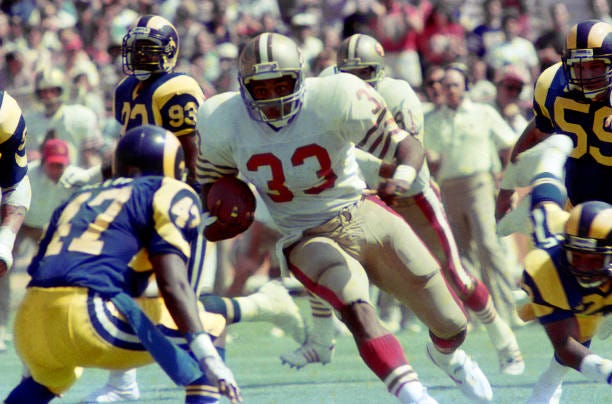
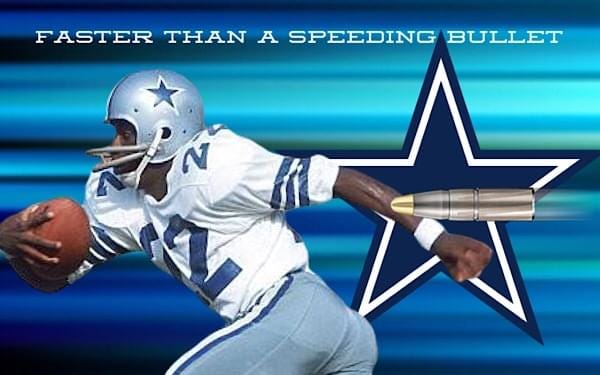
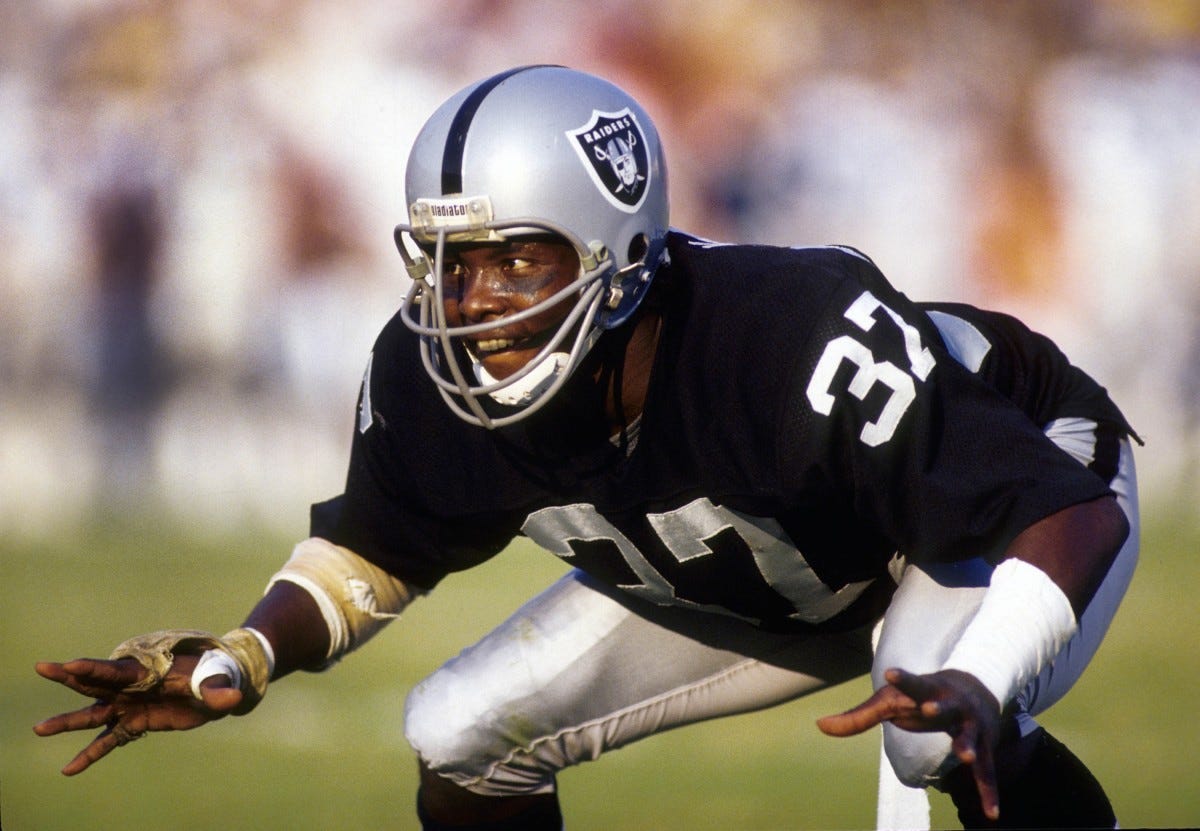



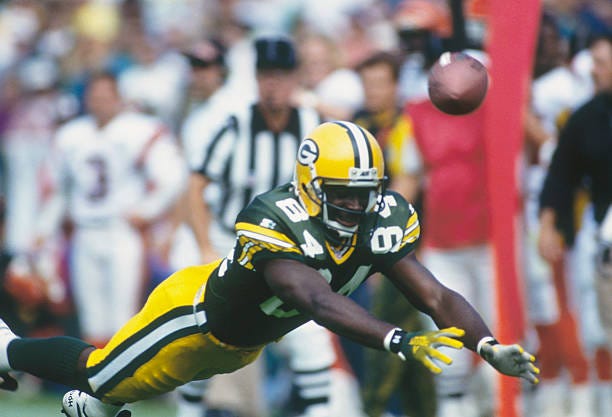

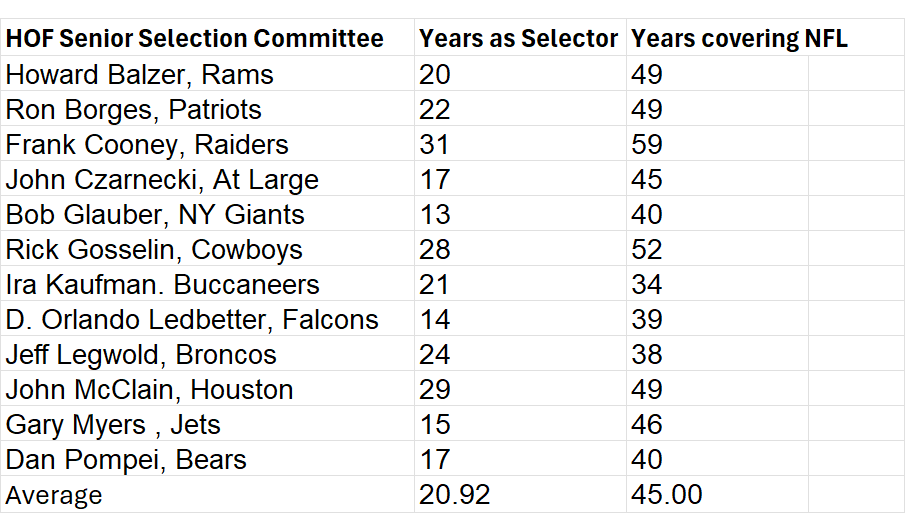
Realize I'm late to the party, but if you look at 1970s All Decade cornerbacks, you don't see Mel Blount, Lem Barney, Ken Riley, etc.
But you do see one of the original "shutdown CBs," Louis Wright - who has never gotten #PFHOF respect or traction merely because he shut down the opposing WR without gaudy INT stats. Also because the Broncos were short-sighted in raising awareness of legit all-time greats whose careers were primarily before Pat Bowlen.
Shutdown cornerback you say? Huge reason SBXII was close until late - despite 8 Denver turnovers. Cowboys resorted to gadget plays to seal the victory after a final turnover - because Drew Pearson was shut out until a random 4th-quarter, 13-yard catch.
Also validating this is how the 1977 #Broncos (and Orange Crush defense) was the only Super Bowl team of the first 74 (37 SBs) with not even one Hall of Famer - until Randy Gradishar's 35-year wait ended last month.
If you ask historians specific to 1960s/1970s cornerbacks on the outside looking in, Wright is close to or at the top of the list.
Something to think about.
Ummm … Frank Minnifield and Hanford Dixon — both better than Hayes or Lewis. As a former college cornerback myself, and a former college and high school DB coach, I am frustrated with how HoF voters evaluate cornerback play. It is NOT about “statistics” like interceptions. If you have a lot of interceptions, 1 or 2 things are true (generally) — the offense isn’t afraid to throw at you and/or you’re playing a lot of zone coverages.
In 1987, Hanford Dixon was thrown at while in man coverage (which is mostly what the Browns did) SEVEN times THE WHOLE SEASON! That’s insane. That’s dominant. There is no way to accumulate stats that way but you are impacting the game dramatically because you are changing what the offense can do and limiting them.
The Browns had little pass rush and other than Clay Matthews, no other real difference makers on D. But Dixon and Minnifield each went to 4 Pro Bowls and were voted as the 2nd best CB tandem in NFL history (behind Hayes and Haynes, but I would quibble with that).
It is absolutely criminal that these guys don’t get considered, because in the mid to late 80s, they were dominant.